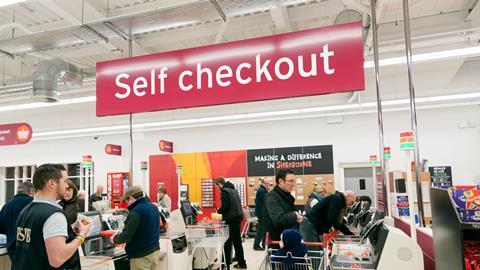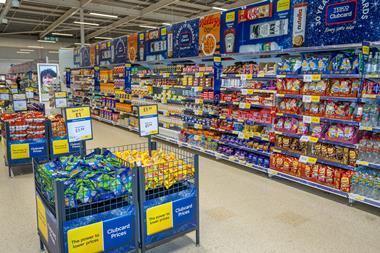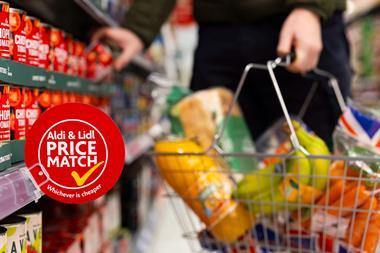Supervisors offer incredibly useful feedback on how to make them work better for customers, staff and the bottom line
Self-checkouts (SCOs) are now a ubiquitous part of supermarket shopping. And retailers’ reliance on them is only increasing. Tesco followed many of its rivals this summer in announcing manned tills would be removed from larger stores – citing a “lack of customer demand” – and replaced with trolley-friendly, full-shop machines.
Despite some protestations, broadly shoppers are keen on them too. An industry source revealed to The Grocer around 80% of sales in a typical supermarket now go through SCOs.
But SCOs are far from perfect. Shrinkage is an issue, likely to intensify in the cost of living crisis. ECR Retail research from 2018 found a store with half of transactions going through fixed SCOs can expect shrinkage losses to be 77% higher than the average rate.
Their shortcomings are proving a major headache for store staff too – who have weighed in on how they should be improved in a major survey this month of 6,000 SCO supervisors, led by University of Leicester professor Adrian Beck.
Non-payment alerts
“It is relatively easy for customers to either not realise payment has not occurred, or make it look as though they have paid when they have not,” Beck says.
In the ECR Retail-backed survey, an alert for non-payments was believed to be an effective or very effective solution by 90% of respondents – and the top technology-based improvement they thought should be made to the machines.
“[We need an] immediate alert that a customer hasn’t paid rather than a message a few minutes after they’ve left asking if they want to continue their purchase,” said one respondent.
Exit gates
Non-scanning, walkaways, and mis-scanning were considered by supervisors to be the most common forms of self-checkout abuse.
Tesco has been installing turnstiles at SCO area exits where customers have to scan a barcode printed on a separate receipt to leave. Sainsbury’s, too, has this year been rolling out receipt scanners.
Despite anger from some shoppers, 85% of SCO supervisors agreed some form of check after the self-pay area would be effective.
The two technology-based interventions considered least effective by store workers were video screens, where the face of the shopper is displayed back to them as they scan, and product weight checking, when a product placed in the packing area that has not been registered on the EPoS system prompts an alert. “The latter’s relatively lowly rating may be due to real-world experience of having to deal with large numbers of false alarms,” says Beck.

More staff
Asked to choose a single intervention to improve SCOs, 37% of respondents answered more staff on the machines – more than double the proportion that said “better designed machines” (16%).
It’s little surprise. Some 84% of supervisors believed one to six machines per staff member to be the optimum ratio, despite the largest proportion of them (38%) being expected to manage seven or more. As a result, close to two-thirds felt overwhelmed.
Beck says many supermarkets view SCOs as a “minimum-possible staffing operating model” but the result is “for the most part [supervisors] feel unable, certainly at busy times, to deliver anything beyond a highly reactive, alert-driven, light-touch approach”.
Offenders are wise to their workload. “I feel that as soon as I turn my back to help customers others might be putting things in their bags,” said one supervisor.
More space
Close to a third of supervisors recommended more square footage be dedicated to SCO areas, while 14% said there should be fewer machines, 12% wanted trollies banned from the area, and 9% suggested bigger bagging areas. As one respondent noted: “It’s so crammed you can’t see what people are doing.”
The lack of space is a hangover from early rollouts of the machines, Beck says, which had “largely been ad hoc and opportunistic, typically positioned in any currently available space, with little consideration for how this may affect capacity to impose control and manage losses”.
Beck insists that respondents “did not have access to any form of verifiable data to inform their thoughts around how effective or not different types of intervention might be” beyond their personal experience. But, he says “their thoughts and perceptions” are incredibly useful.
“Above all, the research has highlighted how important people are in this process,” he says “but if they are to be successful, they must be given a manageable workload, receive high quality training, be supported with technologies that help them to focus upon the customers, transactions and events that matter, and operate in a space that is well designed, and above all, enables a zone of control to be maintained.”
Time for a self-checkout rethink?




















No comments yet